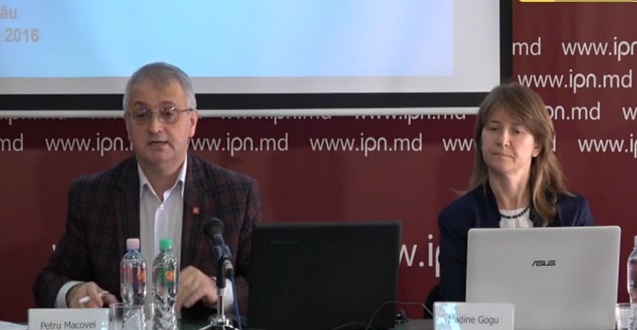
In terms of quantity, the authors of the report find that in this period the media published a very large number of materials. The 12 monitored televisions aired 1,155 news reports and 112 electoral shows, 4 vox populi and 2 interviews with candidates. A total of 110 hours. The majority covered political topics or topics related to the electoral process, which “could influence the voters’ decision to vote or not to vote for a certain candidate,” Nadine Gogu said. Portals published a total of 740 materials directly or indirectly related to the election campaign. In print media, the 4 monitored newspapers – “KP v Moldove”, “Panorama”, “Săptămâna” and “Timpul” – published more opinions than news about the campaign. According to Petru Macovei, “60% of these newspapers’ editorial space was given to opinions and commentary, while news took up only 24%.”
In terms of quality, the majority of media outlets showed political preferences. Televisions Prime, Canal 2, Canal 3 and Publika favored exclusively Marian Lupu, the candidate of the Democratic Party of Moldova. “Massive support for Marian Lupu was found at these 4 televisions in a total of 364 materials, in newscasts and shows. It is an imposing number,” Nadine Gogu concluded. On the other hand, these channels disfavored candidate Andrei Nastase and the representatives of the “Dignity and Truth” Platform Party (PPDA), who appeared in negative contexts in 131 materials.
Jurnal TV channel in the reporting period favored exclusively PPDA candidate Andrei Nastase (57 materials) and clearly disfavored Marian Lupu (87 materials).
NTV Moldova and Accent TV channels covered the same topics, from the same perspective, with the same sources. Both channels massively favored candidate Igor Dodon. On NTV Moldova, Igor Dodon was supported in 90 materials, while on Accent TV – in 62 news stories.
According to the Executive Director of the IJC, in the first week of monitoring, Moldova 1 provided neutral coverage of all candidates, but “the last few days, because of news reports about the Government assuming a set of laws, about various meetings and visits abroad, in which the government appeared in positive contexts, being supported by representatives of international institutions, made us conclude that those materials favored Marian Lupu, as he is supported by a currently governing party.”
No clear violations of professional standards and requirements were found on Realitatea TV, Pro TV, TV 7 and N4.
In the opinion of Petru Macovei, the situation with online portals is probably even worse than in broadcast media. The websites monitored were: agora.md, jurnal.md, deschide.md, gagauz.info, moldova24.info, newsmaker.md, noi.md, realitatea.md, sputnik.md, today.md, unimedia.info and ziarulnational.md.
“Like with broadcasters, the editorial policies of these outlets were not focused on informing voters, but on favoring some candidates or disfavoring others. In this sense, observers noted tendentious selection of materials about candidates, either positive or negative, and very rare cases when outlets wrote honestly about all candidates,” the Executive Director of the AIP said. Also, the authors of the report pointed to the language used by some portals – “licentious, with labeling and defamatory expressions addressed to some opponents.”
Such reports will be published weekly and they will be accompanied by case studies referring to the more serious problems in terms of compliance with the law and with journalistic ethics in the presentation of information directly or indirectly related to elections.
Monitoring will be conducted in the period of September 15 – November 13, 2016. Among the 28 monitored media outlets, there are 12 televisions, 12 online portals and 4 newspapers. Their selection was based on several criteria – form of ownership, language in which they write or broadcast, geographic coverage, notoriety or audience. In the case of televisions, the monitored hours are 18.00-24.00: newscasts, electoral shows, interviews with candidates, vox populi polls and debates. In the case of portals and print media – the entire editorial content, except duly marked electoral or political advertising.
Monitoring is conducted as part of a project funded by the National Endowment for Democracy (USA) and the Council of Europe.










